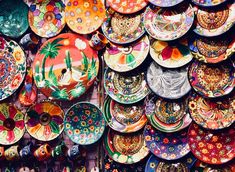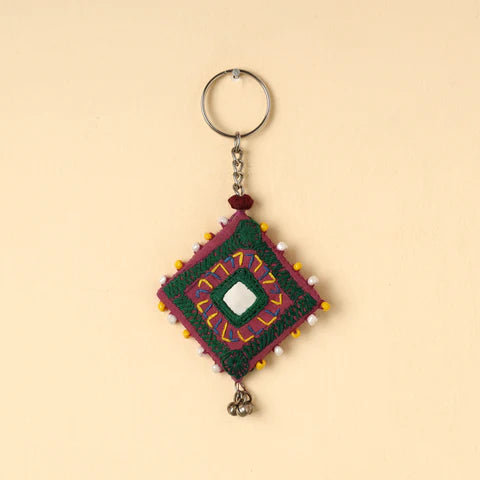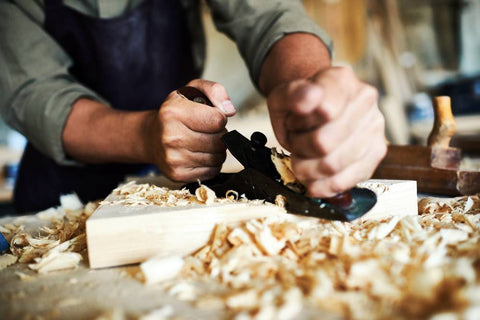Due to the advancement of modern technology over the past few decades, mass-produced, machine-made goods have become more and more popular. This has left very little space for handmade goods. Many brands and businesses choose to take the tech route to reduce expenses and optimise time while meeting growing demands. What is then the future of Indian artisans, handcrafted goods, and eco-friendly products made by hand? This bigger question raises concern about the future of handicrafts of Indian states. However, the timeless and classic appeal of Indian handmade items still attracts customers not only from India but also from the international market.

Rural Villages Are Roots of Indian Crafts
The handicraft industry is centred around a flourishing community of artisans. These craftspeople are the unsung heroes who give life to inanimate objects with their hands. Crafting is a way of life for many people, not merely a means of subsistence. Both family and tradition are maintained by the complex skills and abilities that are handed down through the generations.
You would be amazed to know that villages are the roots of Indian handicrafts as they follow the culture, traditional beliefs and the legacy of artworks rigorously. Moreover, the crafts of India depict the rich cultural diversity of our past. From the intricate wooden artwork of Rajasthan to the vibrant Madhubani paintings of Bihar, there is so much to explore. The visual record offers an insight into the culture, ideologies and artistic expression of various regions of India.
Fortunately, a large group of artisans are devoted to bringing these handicrafts back to life, preserving them and promoting them. Nowadays, a lot of craftsmen go above and beyond to produce different types of handicrafts in India that are also commercially viable. Some designers use traditional knowledge to make handmade products on their own, while others collaborate with nearby communities. This also attracts international customers which results in handicraft export from India.

Evolution Of The Handicraft Market Over Time
The handicraft market of India boasts a rich history, intricately tied with the country's cultural tapestry. Its millennia-long growth is a reflection of the passage of time, the entrance of various influences and the unwavering energy of artists who keep bringing ancient customs to life. We can summarise the evolution of the Indian handicraft industry in the following phases.
Ancient Handicraft Industry
As early as 3300 BC during the Indus Valley Civilisation, skilled craftsmen were involved in crafting exquisite pottery, jewellery, hand-made figurines, and rock painting. All these artworks laid the foundation for an emerging handicraft culture in the Indian Peninsula. Later on, the Vedic era of 1500-500 BC witnessed the craftsmanship of weaving, wooden carving, metal enamelling, and others. It is to be noted here that earlier handcraft items were based on the prevailing lifestyles.

Medieval Handicraft Industry
In medieval India, Islamic influence emerged in every aspect of life. Hence, the handicraft market of India was focused on meeting the needs of Sultans. During the Mughal period, the Indian handicraft industry is said to have witnessed a golden period. The pietra dura, zari embroidery, and intricate inlay works became the fashion which offered regal elegance to jewellery, furniture, and textiles.
Modern Handicraft Industry
Emerging fusion styles and modern designs blend traditional craftsmanship with modern aesthetics. With the advent of colonial rulers in India, the handicraft market of India was influenced by European designs and motifs. Regional diversification in the handicraft industry became visible exhibiting unique style and technique. In this period, eco-friendly products and sustainable handicraft items were made to address environmental concerns.

Handicraft Market Expansion From Local to International
More than just objects, handicrafts endure representations of culture, customs and the unshakable commitment of talented craftsmen. Every piece of handicraft is the pinnacle of exquisite craftsmanship while telling a tale, preserving cultural history and showcasing the diverse fabric of India. Some of the most sought-after goods on the global market are the nation's incredibly wide and varied selection of handcrafted items. India is a prominent player in the global handicraft market and consumers all over the world are drawn to its diversity of handmade items.

Challenges In The International Market
Talking about the challenges faced by the Indian handicraft industry, British colonisation brought challenges with the emergence of machine-made goods posing stiff competition to traditional crafts. There are the following challenges faced by the Indian handicraft industry in making a place in global markets.
- There is an inconsistent quality of handicraft items due to a lack of standardisation in production processes and quality measures.
- The higher cost of raw materials and lesser availability of raw materials make handicraft items costlier than machine-made products.
- Many Indian handicraft brands struggle to establish their visibility in the international market which leads to a weak brand presence.
- Small companies and artisans frequently struggle to get access to loans at reasonable rates and other financial resources. This makes it difficult for them to scale up the production and satisfy global demand.
Government Schemes As A Bridge Between Indian Handicrafts & Global Market
To plug the aforesaid challenges faced by Indian handicraft exporters, the government of India has launched many schemes and initiatives.
One District One Product Scheme
This initiative aims to recognise and promote a product from one district. It seeks to support districts in realising their full potential, promote sociocultural and economic development, and generate jobs, particularly in rural areas.
Ambedkar Hastshilp Vikas Yojana
This scheme intends to support craftsmen with their human resource development, technology and infrastructure needs.

Future Of Indian Handicrafts in The International Market
The Indian handcraft sector has enormous potential, despite challenges including globalisation and competition from mass-produced goods. Exciting opportunities arise from the increased awareness of sustainable practices, distinctive workmanship, and cultural heritage. The Indian handicraft industry may grow by embracing the trends and resolving challenges, protecting long-standing customs, empowering craftspeople and branding handicraft items worldwide.
India's economy is greatly impacted by the exports of handicrafts. They generate a substantial amount of the nation's foreign exchange earnings and employ a sizable number of people, particularly in rural areas. To empower the artisans and their crafts, iTokri came into being. iTokri is India’s most loved e-commerce portal where you can make handicrafts online purchases. Visit iTokri to explore a wide range of Indian handmade products.
 Verified Purchase
Verified Purchase




































Leave a comment (all fields required)